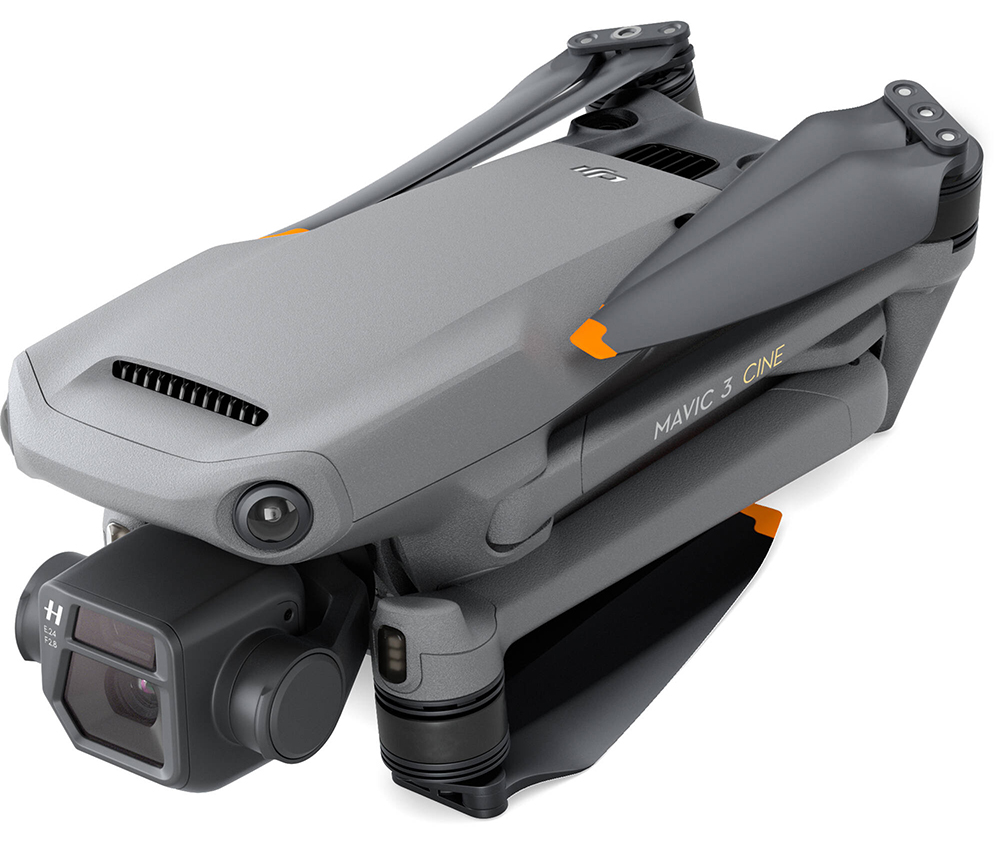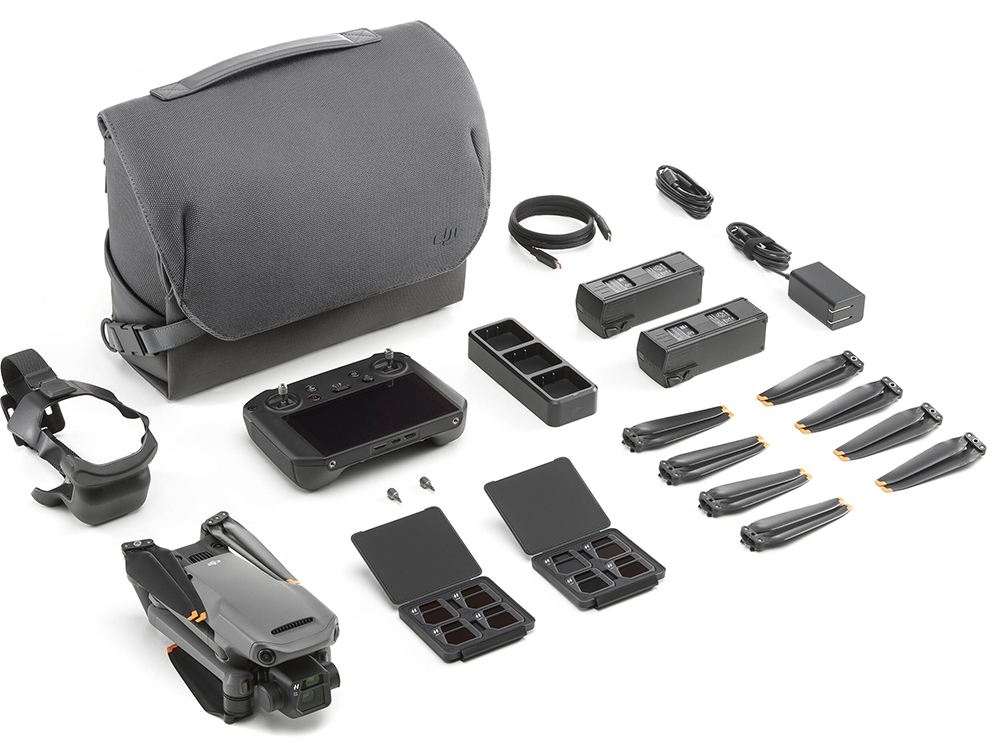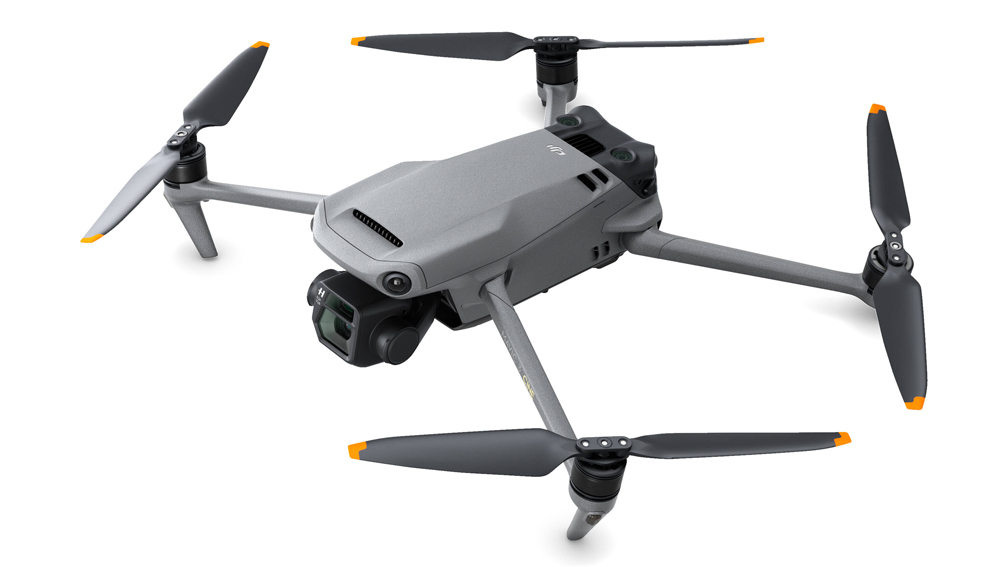Quality Imaging and a Smooth Flight with Omnidirectional Sensing
Review by Dave Williams
The DJI Mavic 3 Cine has made the world of drone photography and videography a very exciting place. The company, DJI, is the industry leader in drone technology, and here’s a fun fact: DJI is the world’s largest aircraft manufacturer and, after acquiring Hasselblad, the world’s largest camera manufacturer as well. There are two versions of the DJI Mavic 3: Standard and Cine. We’ll be concentrating on the Cine in this review but, to quickly touch on price, the Cine sells exclusively as a Premium Combo at $4,999, whereas the Standard is available alone for $2,049 or as a Fly More Combo for $2,849.
The DJI Mavic 3 Cine is an incredible addition to any drone pilot’s toolkit, whether for photography or videography. The aircraft is packed with enhanced safety features including Omnidirectional Obstacle Sensing. There are several wide-angle sensors on the aircraft that work in parallel with its high-performance vision computing engine, so the drone can literally see obstacles as well as sensing them with radar-like sensors. The drone will avoid any obstacles it comes up against, and will plan a safe route around them where possible, if that’s what you want. When testing, I flew the drone straight at a wall and it stopped dead in its tracks to avoid the collision! I also flew the drone at a large vehicle, and it dealt with the situation by flying up and over the vehicle to avoid any conflict. These sensors existed on previous iterations of the Mavic series, but they’ve been overhauled and, on the Mavic 3, they face every direction. The APAS 5.0 system that choreographs the obstacle avoidance works in very complex environments, too.

Concentrating now on the flight control system, the Mavic 3 Cine comes with the RC Pro Controller, which features a 5.5″, 1080p, 1,000-nit display and a high-performance processor. This professional level controller uses O3+ Video Transmission, which means DJI is utilizing the 2T4R antenna system to provide a video signal at 1080p and 60 fps across a range of up to 15 km, with a low latency of 120ms. In testing, I was able to fly the drone behind large rock formations with no loss of signal. The controller is a standalone system that also supports third-party apps, such as Instagram and Facebook, and even allows for live streaming. The Wi-Fi 6 protocol allows downloads of up to 80 MB/s, which gives you faster access to your photos and videos.
“Imaging above everything” is the headline DJI uses to market the Mavic 3 Cine, so let’s dive into the imaging power now. The main camera is the Hasselblad L2D-20c, which has a 4/3 CMOS sensor and boasts an adjustable aperture of f/2.8–f/11 at 24mm while knocking out 20-megapixel photos. The image quality that these numbers sit behind is nothing short of mind-blowing, and I’m not exaggerating. The sensor packs an amazing 12.8 stops of dynamic range, bringing out details in the highlights and shadows that I never thought possible. This high-dynamic range goes perfectly hand-in-hand with the Hasselblad Natural Color Solution that delivers an incredible result when you press the shutter, outputting beautiful, natural yet vivid colors in your photos.
The combination of these systems means that photos come with a great level of detail preserved throughout the image, and the larger-than-normal sensor (for a drone) gives great performance in low light. The focusing happens at lightning speed thanks to the Visual Detection Auto Focus (VDAF) technology used in this camera, which interprets a constant stream of data from multiple sources to ascertain distance data throughout your image. There’s no lag involved; it just snaps straight to the focus point you select. I can’t stress enough that the camera on this drone is incredible.

As well as the 24mm lens, there’s a Tele Camera that gives a hybrid zoom level up to 28x at f/4.4. This lens is 162mm equivalent, and the level of zoom offered affords many options for shooting subjects from afar without disturbing them, as well as flying creative maneuvers that show a sense of depth.
When you switch over to look at video, you’ll see an equally high level of performance: 5.1K video recording with a 10-bit D-Log color profile means that you can capture one billion colors. Gone are the days of harsh gradients, thanks to this performance, and the option to take full creative control in post means that you can create truly spectacular videos. The encoding is complete with Apple ProRes 422 HQ. This video camera is up there with professional quality cameras, and the results speak for themselves.
The overall build quality shows a very high standard. Everything about the DJI Mavic 3 Cine, including the RC Pro controller and the included carrying bag, feels strong and sturdy, and the materials used are good. The DJI Mavic 3 Cine drone feels exceptionally professional, and the output of videos and photos backs this up. For $4,999, it’s definitely an investment, but you certainly get what you pay for. ■






